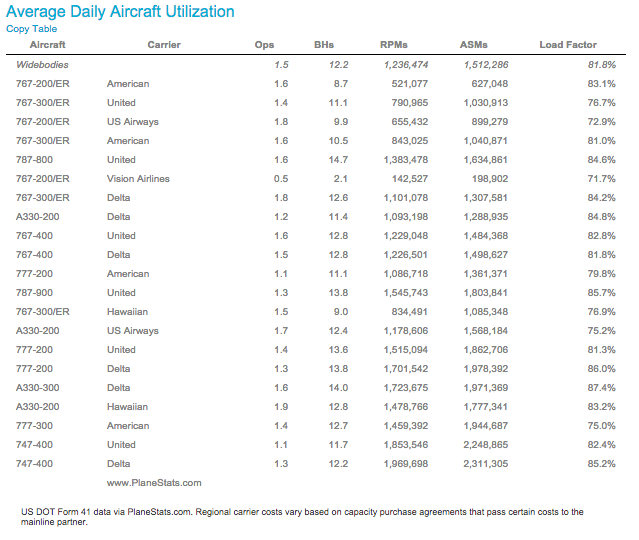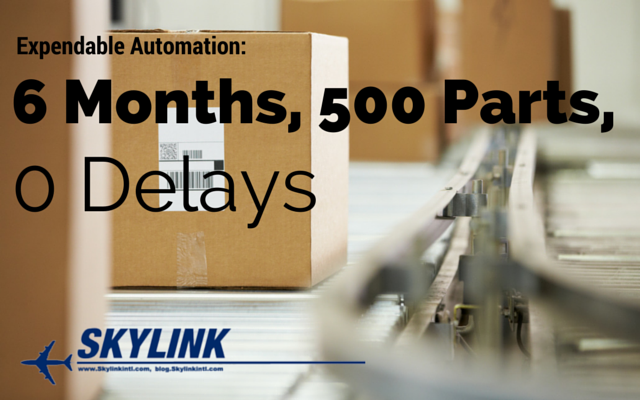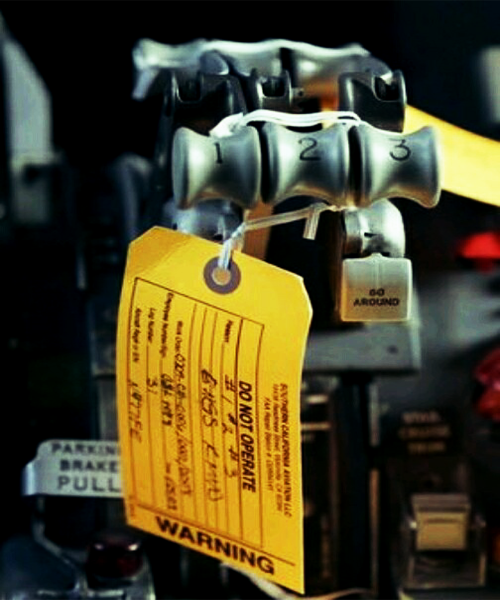It’s common business knowledge that excess inventory is a liability, but it’s also common that you can’t sell what you don’t have. Traditional inventory management approaches force you to purchase excess inventory to pad yourself against stock-outs, causing you to carry excess. You literally have to decide what’s worse for your business: running out of inventory or carrying too much.
7 Tips for Choosing the Right Aircraft Component Pooling Partner
The aviation industry is a competitive market. Under massive pressures (economic & regulatory), airlines are increasingly looking at ways to reduce cost, improve efficiency and increase competitiveness. Aircraft component pooling is one way to just this.
20% Off Popular Aircraft Maintenance Tape
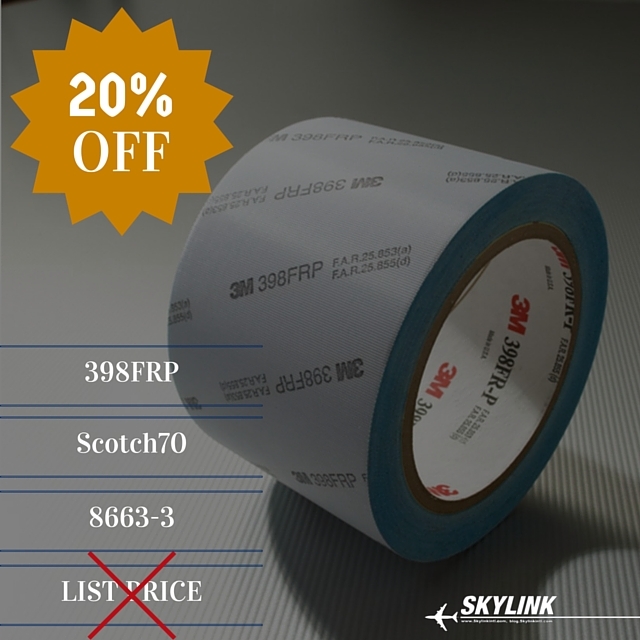 Who doesn't like some good 'ole aircraft maintenance tape?
Who doesn't like some good 'ole aircraft maintenance tape?
You use it often and it does just about anything you want it too.
We go through a ton of a few popular models so we want to extend some bulk savings to you.
For the below items, you'll receive up to 20% off list price on ALL case orders.
Bulk Aircraft Maintenance Tape Discounts
- 398FRP, 3" Glass Cloth 3M Tape
- List Price: $77.58ea
- Your Price: $65.00ea (16.2% Savings)
- Scotch70, 1" Rubber Electric 3M Tape
- List Price: $49.22ea
- Your Price: $39.08ea (20.68% Savings)
- 8663, 3" Transparent Polyurethane Protective 3M Tape
- List Price: $562.02ea
- Your Price: $475ea (15.4% Savings)
Would you like to take advantage of these awesome savings?
Do You Know Your Wide-body Aircraft Operating Costs?
Whether you own a fleet of regional, narrow-body or wide-body aircraft, knowing your operating costs is important.

Your goal is to lean out and maximize your fleet to it’s fullest potential. What strategies can you adopt to streamline your maintenance costs? With crew and maintenance costs being over 25% of your total operating costs, I would say these are important, wouldn’t you?
Below is a list from planestats.com on the reported aircraft operating costs for nearly 500 wide-body aircraft for the 12 months of 2014. Its good to note that fuel prices will clearly be much different for 2015.
Aircraft operating costs per block hour
Cost per ASM
Monthly ownership costs
Average daily aircraft utilization.
Additive Manufacturing For Aircraft Parts Is Taking Off
It is no secret that additive manufacturing is the hot topic, especially in our fast paced aviation world. Many companies are exploring this new frontier of technology because of its unbelievable benefits. Pratt and Whitney are a perfect example of the new exploration in this uncharted world with manufacturing engine brackets using 3D printing. They have embraced two of many additive manufacturing techniques to make engine components, engine brackets specifically. Instead of using expensive slabs of steel to shape aircraft parts, the process of additive manufacturing enables Pratt and Whitney to layer materials together using absolutely no waste.
Not only does Pratt and Whitney expend no waste, they also are manufacturing parts that are lighter and cheaper.
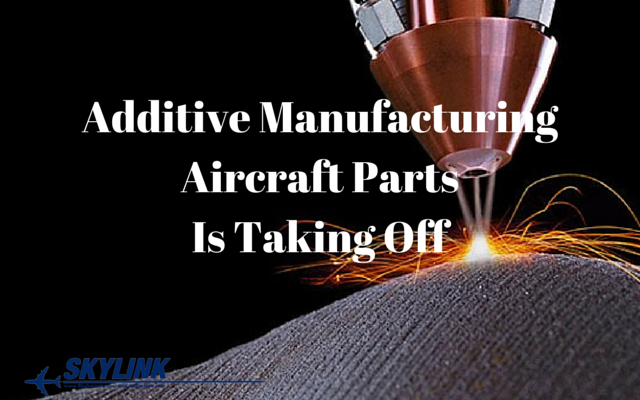 This trifecta of efficiency is what the aviation industry is raving about and why companies like Pratt and Whitney and even GE Aviation has adopted this new technique in manufacturing.
This trifecta of efficiency is what the aviation industry is raving about and why companies like Pratt and Whitney and even GE Aviation has adopted this new technique in manufacturing.
GE has adopted laser-powered 3-D printers and inking machines to make aircraft parts that seemed like science fiction long ago. GE likes to call this next chapter in manufacturing the next step in our Industrial Revolution.
The Industrial Revolution was a transition from new manufacturing processes in the period that started in 1760.
Today, additive manufacturing starts a new chapter in the aviation industry.
The additive manufacturing process can increase the tempo of production, reduce waste, and produce designs that seems almost impossible with last generation manufacturing processes. Unusual brackets, new age propellers, and even new engine designs are now open door ideas with this new technology.
However, this new revolution for the industry is growing at a crawl. Additive manufacturing techniques will need to be improved before the entire market adopts the technique with open arms. Glitches and muddy precision is still very common unless a finer and more expensive 3-D printer is purchased.
It makes sense why our industry is an early adopter of this new technology in manufacturing.
Aviation costs are high and even the most minuscule reduction in any costs would be a substantial benefit to any aircraft part manufacturer.
This process is taking off with no emergency brake and is beginning to grow exponentially.
In 2016, GE Aviation will unveil 19 3-D printed fuel nozzles in a combustion system that can only be made using this method. They will lead the aviation industry with the first solid models of these unique parts. This exciting time is being called the new or 3rd industrial revolution and companies like GE and Pratt and Whitney are paving the way for others to lead.
Are you looking to streamline your supply chain? Fill out the form below and we'll be more than happy to help you out.
Expendable Automation: 6 months, 500 parts, 0 delays
Do you ever wonder how you can make aircraft consumable and expendable consumption easier? Or even automated?

No matter the price, no matter the size, no matter how many you need, even a small expendable can cause you to have an Aircraft on Ground (AOG).
These are 3 words every procurement professional never wants to hear. These words raise your blood pressure, make you sweat, and keep you up at night.
AOGs are costly occurrences that thousands of airlines experience due to consumable and expendable problems. It’s often caused by the component being out of stock, but it doesn’t stop there.
These little things can cause AOGs because of capital costs / obsolescence, logistics, or even from a failed purchasing plan.
How often does one of these create issues for you? Think about it. Once, twice, twenty times a week?
Now think of all the time and money you spend fixing these problems. It gets messy fast.
It doesn’t have to be all that bad and is incredibly simple if the right strategies are applied.
Automating your expendable and consumable consumption
I’m a huge advocate of automating certain aspects of my life.
From social media posts and blog creation, to business development and automated ERP processes, automation can be found everywhere.
And most importantly, automation is handled by people who have a greater knowledge of certain activities. Or the opportunity cost for them to do a certain task is far cheaper than what you can do it for.
A good example is the company who cleans your office. The opportunity cost is much cheaper for them to do it instead of you. Make sense?
The same goes for automating your consumable and expendable consumption.
It’s as simple as 1, 2, and 3.
- Identify high usage components and / or components you use every year.
- Send this list to your consumable management partner
- They ship these items to you on a forecasted monthly consumption rate (JIT) or they keep them in stock for On-Demand delivery.
The benefit of automating is you get On-Demand component reliability through continuous replenishment. This significantly reduces your costs of AOGs, procurement, shipping, stocking components, and out of stock scenarios.
Through automation you get aircraft consumables and expendables when you need them, where you need them, and how you need them. Direct, automated shipments can be used for one maintenance hub or 15. It doesn't matter as the program automation is designed for your unique operation.
Think about it, how will automating reduce your costs and increase your reliability?
P.S. We structure our consumable automation program around you. For more information on how we can support your needs through this program, simply fill out the contact form below!
3 Ways Not To Be Consumed By Consumables
In a world of non-stop AOGs, the evaluation of the aircraft can give us one more hurdle...
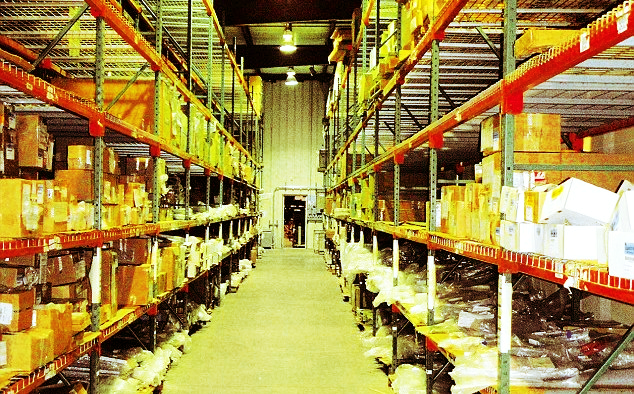
Consumables.
Many years ago (years I rather not try to recount) Legos was my toy of choice.
Besides the GI Joes and Hot Wheels of course.
Lego is a toy that inspires creativity and it's something to build from scratch. Piece by piece, color by color. You can make something spectacular or have a pile of useless toy bricks.
These toy bricks are a lot like aircraft consumables.
Use the wrong piece, order the wrong product, lose an important component, and you have a messy maintenance project. One that’ll lead to AOGs, lost revenue and a stressed out you.
Consumables are an integral part of airlines maintenance operations. But of course you know this.
Any way you think of it, it’s difficult keeping up with new sealant specs, higher assembly numbers and bad information. More importantly, chasing down problems is counterintuitive...and costly to you.
Dealing with hundreds of airlines, I've heard and seen it all.
Not being consumed by aircraft consumables takes a strategy.
Create a plan of attack
How do you go about ordering your consumables?
Is it a blind RFQ to hundreds of people, or do you have a method behind your madness?
Whether it's 3M 398FRP white cloth tape or window sealant, sit back and think about the most effective distribution for you.
Some things to think about are your future needs, expiration date, HAZMAT, and transport.
If you have a long consumable list think about the logistics and the time it'll take you to process the requirement. Once you start getting into multiple line items you risk increases for possible problems.
Don't process your long consumable list immediately. Think about how your requirement will best be served and follow a plan of attack that accomplishes just that.
Establish a forecast
If there's one word that can cause stress and resolve hundred of problems at the same time, it's forecast.
When you think of forecasting you're bound to think of reports, list building, statistics, and 10 others things that are "hair pull" worthy.
Relax.
Forecasting is actually not that difficult and it will save you countless of hours processing orders and thousands of dollars in inventory.
Lets look at a good example I mentioned above, the 3M 396FRP tape. Lets say last year you bought a total of 144 rolls divided between 3 orders. Now factor in the cost of each roll, processing time, and freight and you get close to an accurate per unit cost.
Over the next 12 months you forecast the same consumption rate. Building this forecast allows you to have the tape in stock when and as you need it. No overbuying or stocking for long periods of time. It significantly cuts processing and holding cost.
This is the primary purpose of our JIT program. You would receive 12 rolls per month as a part of your monthly JIT consolidation. No POs, no shipping instructions, it just shows up at your door.
Forecasting generates simplicity and simplicity saves you time and money.
Having a “go-to” resource
When you have a problem, whose your external resource?
Having internal resources is great but what if engineering tells you need Cargo Gel Tape?
Where do you go, who do you ask, who can best serve your needs?
Having a professional external resource that has your best interest at the front of everything they do is crucial.
They'll help you solve consumable hurdles, answer your questions about specification, and most important they’ll work with you to streamline your consumable distribution.
Relying on that "go-to" source will save you countless hours.
Your time is scarce and consumables have a tendency to peak their little heads and consume much of your day.
Problems are inevitable and it takes pre-thought planning, accurate forecasting, and reliable partners to alleviate most of your headaches.
Are you being consumed by consumables? Comment below.
9 Ways To Reduce Stock & Increase Order Efficiency
Want to know how you can carry little inventory and still support your maintenance projects? Drumroll please.
Through proper planning.
On the eve of a particular Monday I received a “list” of a 100 line items in the form of a good ‘ole consumable / expendable RFQ. You know, the sealants, wire, tape, nuts and bolts type.
Myself and the sales support team began processing the RFQ but something was off.
Something wasn’t right.
Each line item I looked at was ordered last quarter.
I began to wonder why this particular airline was re-creating a process they had already completed the prior quarter.
My mind immediately envisioned a simpler way.
Through proper planning and communication this exaggerated process is 100% avoidable. [CLICK TO TWEET]
After they purchased this requirement “again” they spent an additional $10,000 on labor, processing, shipping and other nuances.
No prices increased and some items had lead times that they had to accommodate.
With proper planning they could have saved $10,000, increased efficiency and avoided stock out delays.
Stock out delays result in increased purchases which leads to excess inventory do to “trying” to avoid the issue in the future.
An inefficient purchasing system
Sending out RFQs to the entire world is a common practice but is it the most efficient?
Industry norm of the send RFQ and watch the flood of quotes come in is okay, but it isn’t efficient.
And it isn’t a viable way to increase vendor reliability as the floodgates of various sources rush in.
This creates improper forecasting, stock buildup, and additional costs to your procurement process.
By the time you receive the quotes, process them and cut the PO, the order cycle has been dramatically extended.
This is especially true for repeat purchases where 95% of the processing time could be avoided, saving money, time and excess stock through vendor demand forecasting.
9 ways to reduce stock and increase order efficiency
Holding onto stock isn’t your primary goal.
It’s not what gets you up in the morning, what you think about during the day or what pays the bills.
Simply put, it’s not your profit generating activity.
Here are 9 ways to reduce your stock and increase order efficiency:
- Use vendor managed inventory & vendor stocking programs: With the right incentives, letting VMI suppliers take the responsibility for replenishment of your inventory, because of their visibility into both their own inventory and your demand data, will always reduce your inventory. Primarily used for maintenance inventories VSPs require your supplier to commit to an extremely high service level for delivery of specific products within a fixed time at a pre-defined mark-up over cost. VSPs can reduce or eliminate inventories for slow-moving products.
- Reduce lead times: When supplier lead times are reduced below the required lead time you set it’ll help remove the requirement to hold much stock, especially consumables. Cutting lead times in half will reduce safety stocks by about 30% for the same availability.
- Improve reliability of supply: Unreliable supply is one of the reasons for holding safety stocks. If delivery is guaranteed on the due date then safety stock can be reduced what's needed to cover common-cause variability. A good start is sharing demand, forecast and stock positions with suppliers. When there’s heightened transparency of information throughout the supply chain it’ll improve reliability and mitigate Bullwhip/Forrester effects.
- Order more frequently: This reduces cycle stock and will often cut it in half. There is a cost as each order will require additional administration overhead and a labour cost to receive the goods. The former can be mitigated with automation and management by exception or through better planning in a Just In Time inventory program.
- Expedite more effectively: Solving supply chain failure quickly will undoubtedly improve service. We’ve all had AOG nightmares. Strong relationships with suppliers means that your expediting process will contribute to 1% point to availability. Without that, availability would have been at 95% – or put another way, good expediting reduced service failure by 20%.
- Forecast more accurately: Better forecasting means lower safety stocks and higher levels of availability. It also means a reduced exposure to excess and obsolete stock risk (a large contributor to your holding cost of stock).
- Liquidate: There’s always a short-term price to pay on the profit and loss (P&L) and the balance sheet, when it’s clear that the value to be gained through liquidation is greater than the most optimistic estimate of future gross margin from conventional product sales, then liquidation is the best decision. You are not in the conventional product sale business so liquidation of absolute or unnecessary stock is highly optimal.
- Strangers strategy: Where there’s a lot of slow moving product in the range, seriously addressing the fulfilment rules of your maintenance activities can make a big difference. Integrating closely with suppliers may enable a back-to-back ordering process and removes the need to hold stock altogether. A close relationship with your supplier is crucial.
- Change the network configuration: The general rule is that the safety stock in the system is proportional to the square root of the number of locations. A hub and spoke approach. Apart from this, understanding the relationship between main store availability and satellite availability is vital. This allows the right balance to be struck between stock in different tiers of the supply chain. Fixing a typical imbalance could reduce stock by up to 10% overall.
Whether you choose one of these strategies or all 9, your primary goal is to reduce stock and increase efficiency.
I challenge you today to implement one and began to make a shift of mass RFQs to structure and deliberate action to your RFQs.
Is your procurement process out of control? Do you have surplus inventory? Are your maintenance projects consistently over budget? Comment below.
Retirement Plan For End Of Life Aircraft
There comes a day when aircraft get old and it’s time for them to retire. Their joints begin to ache, their bolts begin to fall out and their oil dries up.
If you have or know of such an aircraft that’s hurting and barely getting through its last days, we want her.
We’re looking for various teardown candidates who have reached the end of their life.
The current aircraft we want to put in on our retirement plan so they can feel happy and useful once again are:
Boeing 737-300/400/500
We've worked with Boeing aircraft for over a decade. The B737-300/400/500 aircraft is dear to our heart and we want to make sure that she gets the most out of her life. She is our short to medium-range twin jet narrow-body work horse.
Boeing 767
With an increasing number of clients utilizing this aircraft we want to make sure they're covered. This mid to large size, long-range, wide-body twin-engine jet has become a popular choice and we would like to add more to our retirement plan.
Airbus A320
Another popular short to medium range, narrow-body aircraft that comprises a large amount of our maintenance traffic. Since she is popular by our clients, we would like to continue to add more of these aging aircraft to our retirement program.
ATR42 and ATR72
With the first ATR produced in 1984, these regional, twin-turboprops have been a major product line at Skylink. They are a unique blend of elegance and efficiency and as they age we want to make sure they go out peacefully.
Lockheed C-130 Hercules
A major player in the military transport field, this four-engine turboprop is a major transporter for the international Air Forces we work for. She is strong, yet aging. To continually support newer fleets cost effectively, we must be able to use pieces of aging fleets. We will evaluate any model available for tear down.
As you can see, we have a few aircraft that we want to continually add to our retirement program. These aging fleets deserve final days on green pastures and we want to grant them that wish.
If you have or know of one of these aircraft reaching its retirement point: CLICK HERE
Surplus Robbery And Why To Avoid Excess
Have you ever walked down a busy urban street to eventually find out you’ve been robbed?
Or, maybe you're like me, a type that goes grocery shopping while hungry.
I’ll go down each aisle, stomach growling and toss junk in my shopping cart.
A week later I’ll reach into the refrigerator and find out that my vegetables are rotting, the meat is smelly and my fruit is beginning to attract several flying creatures.
These two scenarios have one thing in common, lost money. When you're robbed you lose money immediately but when you overbuy money is lost over time.
Now, the problem with these 2 scenarios is your surplus inventory is similar to both.
I know, hold the screaming and crying.
Aircraft surplus robs you blind
I challenge you. Go through your inventory and calculate the amount of money that's been tied up on your shelves for more than 12 months.
Is it 50%? 75% Maybe even 90%?
Now, think of that money sitting in a large pile in the middle of your warehouse. Do you have the image?
Now light it on fire!
Inventory that’s been on your shelf for greater than 12 months is a poor inventory turnover strategy with negative effects on cash flow.
Just picture how this money could have been allocated. I’m sure you have more important projects than just sitting money on the shelf watching it get dusty. This is why we created our aircraft asset management program.
Our goal is to minimize your inventory's shelf life, reduce holding cost and capitalize on generating revenue from your aging material. Aging assets is a poor way to manage your money.
With so much focus on hedging fuel, creating ancillary revenue, you should also focus on minimizing idle, wasted inventory.
Don’t sit and wait.
Look at your inventory, scream out loud and take action. Liquidating this excess is a bright future for your cash flow.
And just possibly an aircraft asset management program may be a good solution for your operation.
If it is, contact us today by CLICKING HERE and saying "Help me eliminate our surplus nightmare."












